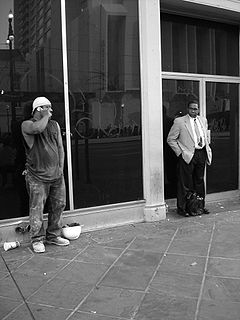This article has multiple issues. Please help improve it or discuss these issues on the talk page. (Learn how and when to remove these messages)
|

Spatial mismatch is the mismatch between where low-income households reside and suitable job opportunities. In its original formulation (see below) and in subsequent research, it has mostly been understood as a phenomenon affecting African-Americans, as a result of residential segregation, economic restructuring, and the suburbanization of employment.
Spatial mismatch was first proposed by John F. Kain, following the theory of John Meyer, in a seminal 1968 article, "Housing Segregation, Negro Employment, and Metropolitan Decentralization".[1] That article did not specifically use the term "spatial mismatch", and Kain disclaimed credit.[2]
In 1987, William Julius Wilson was an important exponent, elaborating the role of economic restructuring, as well as the departure of the black middle-class, in the development of a ghetto underclass in the United States.[3]
- ^ Kain, John F. (1968). "Housing Segregation, Negro Employment, and Metropolitan Decentralization". Quarterly Journal of Economics. 82 (2): 175–197. doi:10.2307/1885893. JSTOR 1885893.
- ^ Kain, John F. (2004). "A pioneer's perspective on the spatial mismatch literature". Urban Studies. 41 (1): 7–32. Bibcode:2004UrbSt..41....7K. CiteSeerX 10.1.1.199.6655. doi:10.1080/0042098032000155669. S2CID 154650017.
- ^ Wilson, William Julius (1987). The Truly Disadvantaged: The Inner City, the Underclass, and Public Policy. Chicago: University of Chicago Press. ISBN 978-0-226-90130-5.